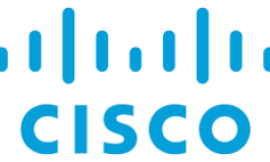
One thing that makes Linux special is that there’s a distribution crafted for nearly every conceivable use case. You’ve got Linux for science, games, productivity, edge, cloud, containers, embedded, big data, networking, security … if you can think of a need, Linux can cover it.
SEE: 40+ open source and Linux terms you need to know (TechRepublic Premium)
Tiny Core Linux is a perfect example. This Linux distribution is as small as you can get (the ISO coming in at 21MB), while still being able to offer a desktop, a full network stack and a package manager. In fact, the only thing you get with Tiny Core Linux is a kernel, BusyBox an FLWM desktop, and a bare-bones list of applications (such as terminal emulator). You won’t find a web browser, an email client or an office suite installed.
To be fair, this is not a Linux distribution that’s going to become your daily driver. Tiny Core Linux is all about reviving old hardware or deploying a very minimal Linux for certain applications (such as kiosks). Once booted, you can install applications (dubbed “extensions”), which are downloaded via the package manager.
Although you won’t be using Tiny Core Linux as your next desktop OS, it can serve plenty of purposes. And given it runs entirely in RAM (although there is an install option–more on that later), it runs very fast. The one thing to keep in mind is that everything you add or change to Tiny Core Linux will vanish at boot. That should give you another clue as to how this distribution can be used.
Use cases for Tiny Core Linux
Before we get into the exploration of Tiny Core Linux, you’re probably wondering what kind of use cases this minimal operating system can cover. Here’s a shortlist of ideas.
- Kiosks
- Internet cafes
- Reviving old hardware
- Education environments
- Temporary computer deployments
- Guest computers
If you have a need for a minimal PC, Tiny Core Linux might well fit the bill to perfection. Tiny Core Linux can be employed for business and personal uses. It’s simple to work with and can be deployed such that users will only have the applications you add and nothing more.
How to install Tiny Core Linux
I’m going to introduce you to Tiny Core Linux by way of the installation, as that will illustrate most of the concepts you’ll need to “get” this distribution. I’ll be doing this via VirtualBox, running on Pop!_OS Linux. The only difference between a virtual machine installation and a bare-metal installation is that you’ll need to burn the ISO file to a bootable USB drive for the bare-metal route.
The first thing you must do is download the TCL ISO file. Make sure to download either TinyCore or CorePlus (which includes Wi-Fi drivers). Once you’ve downloaded the file, create a new virtual machine (or burn it to a USB drive, insert it into the target machine, and boot).
Once you’ve booted Tiny Core Linux you should find yourself on the minimal desktop (Figure A).
Figure A

To install Tiny Core Linux, you must first download one of the app extensions, via the package manager. From the dock, click the Apps launcher (fourth from the left). Once the package manager has downloaded the necessary information (which happens on the first run), click Apps | Cloud (Remote) | Browse. Type tc-install in the search field, select tc-install-GUI.tgz, select OnBoot, click Go, and then click Set (Figure B).
Figure B

After the app is installed, you should then find it listed in the desktop menu. Right-click anywhere on the desktop and then click Applications | tc-install (Figure C).
Figure C

In the resulting window (Figure D), select Frugal, Whole Disk, select the disk to be used, make sure Install boot loader is checked, and click the right-pointing arrow.
Figure D

In the Formatting Options window (Figure E), select ext4 as the filesystem type and click the right-pointing arrow to continue.
Figure E

The next screen (Figure F), allows you to customize bootloader options. You can skip this step for now and edit them manually in the extlinux.conf file later.
Figure F

Finally, you can specify where extensions are stored for the installation (Figure G).
Figure G

Click the right-pointing arrow and then, when prompted, click Proceed. The installation will kick-off, and should complete very quickly. Close the installer and then install applications in the same way you installed tc-installer. For example, you could install the Firefox web browser. The one thing to keep in mind is that when you install the extension for Firefox, what you’re really doing is installing a tool that will download and run Firefox, so the app isn’t actually installed locally. If you selected OnBoot during the installation of the extension, it will automatically be added to the /tmp/tce/onboot.lst file, so it should remain available, even upon reboot.
Drawing a tiny conclusion
Tiny Core Linux has its place. Not only is it very useful for incredibly small deployments, but it’s a lot of fun. This distribution will remind you what it was like to use Linux “back in the day.” From the installation of software to the window manager, Tiny Core Linux is everything I loved about Linux in the beginning. This tiny distribution has a big heart and will easily win you over for specific use cases.
Is Tiny Core Linux a distribution that will wind up on your everyday desktop? No. But it does serve a specific purpose, and it does it very well. If you have a need for a Linux with an absolute bare minimum footprint, that can be scraped completely clean on boot, Tiny Core Linux is exactly what you’re looking for.
Tiny Core Linux isn’t perfect, and sometimes it can be a bit frustrating (especially running as a virtual machine, as you’ll find the cursor can be a bit tough to control), but once you get the hang of his operating system, it can be a gem in the right instances.
Subscribe to TechRepublic’s How To Make Tech Work on YouTube for all the latest tech advice for business pros from Jack Wallen.
Source of Article



